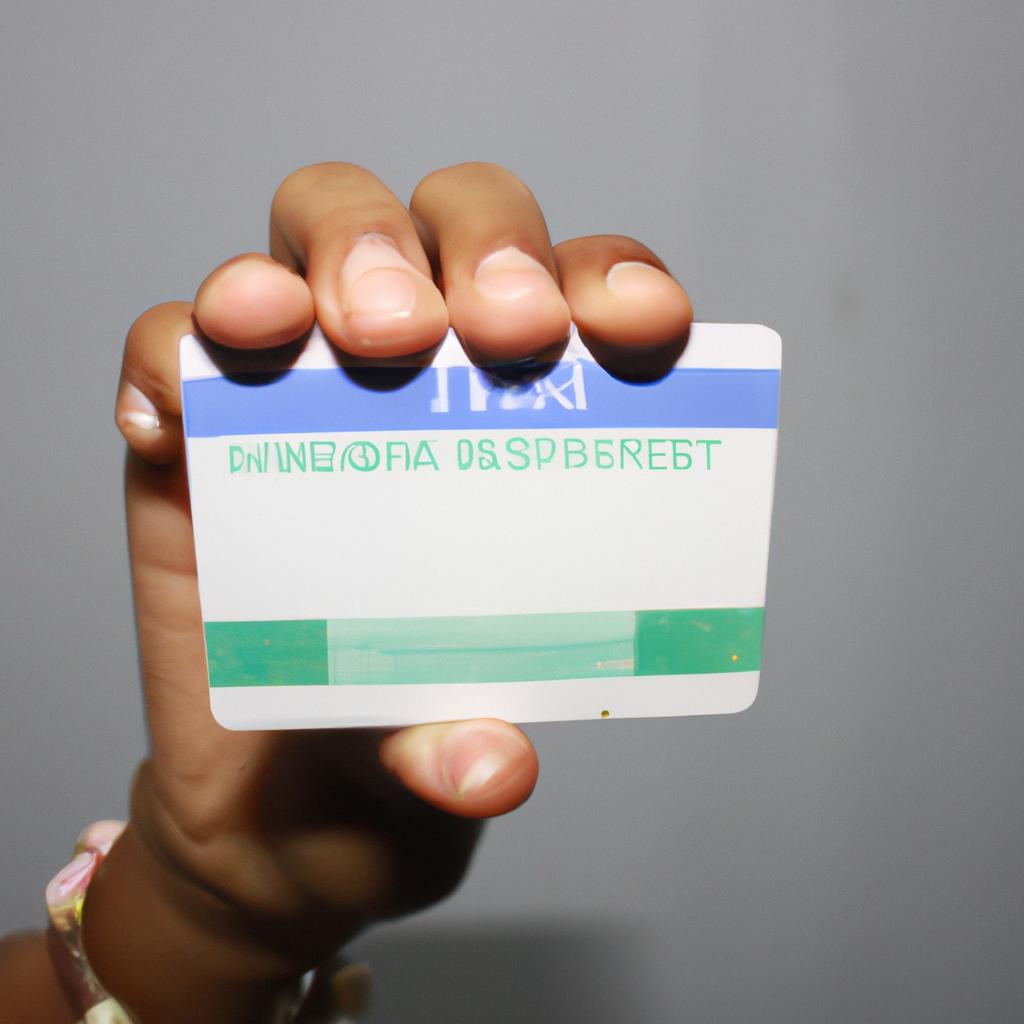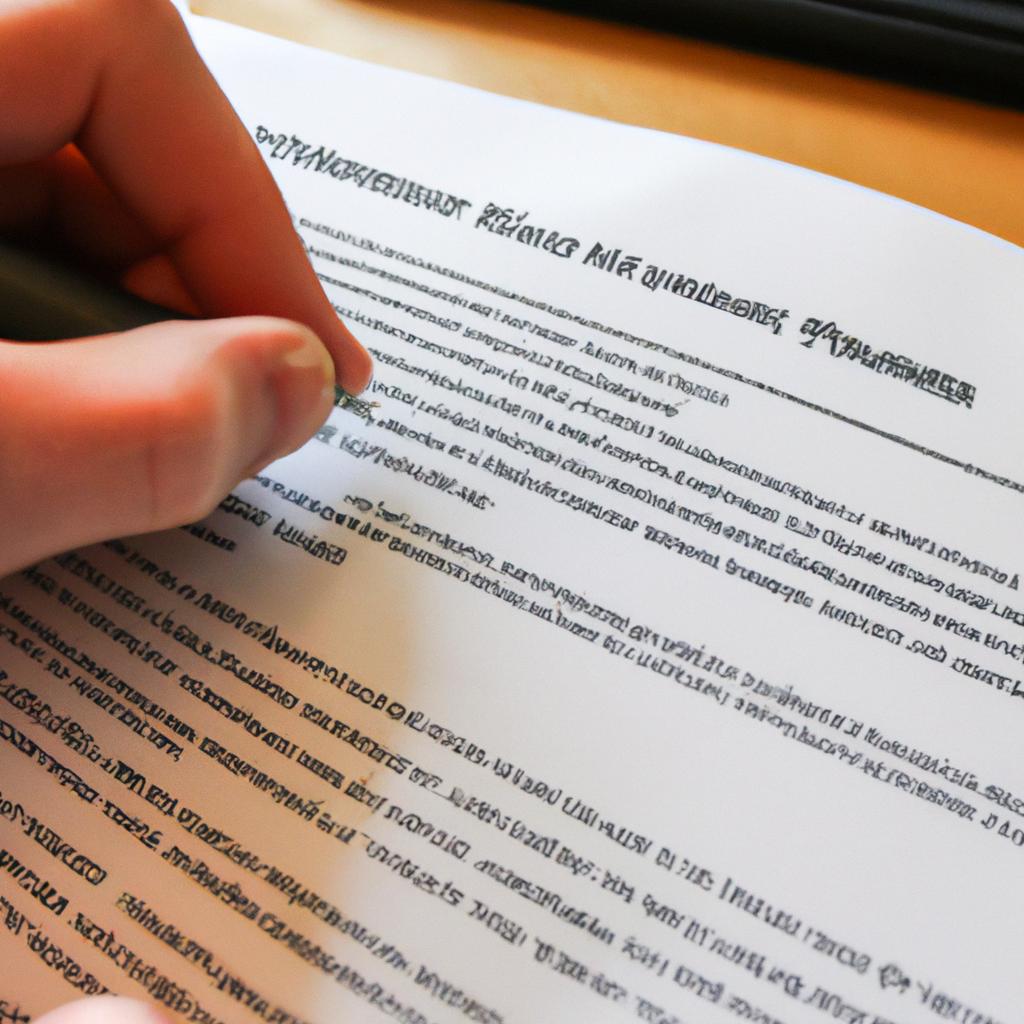Voter ID laws have been a subject of intense debate and controversy in recent years, particularly within the context of electoral reform. In Pennsylvania, the issue has gained significant attention due to its impact on the Reform Party’s efforts to promote inclusivity and equal representation. This article seeks to examine the implications of voter ID laws on the Pennsylvania Reform Party and shed light on their potential effects on electoral practices. To provide an illustrative example, we will analyze a hypothetical case study involving a marginalized community’s struggle to exercise their right to vote under these laws.
The introduction of stricter voter identification requirements raises important questions regarding access to voting rights for marginalized communities. The Pennsylvania Reform Party advocates for electoral reforms that aim to amplify voices often unheard or ignored in traditional political structures. However, with the implementation of voter ID laws, concerns arise about whether these initiatives effectively hinder rather than advance this objective. By exploring the ramifications of such legislation through a hypothetical case study, we can gain insight into how voter ID laws may affect the prospects of inclusive democratic participation and representation within Pennsylvania’s electoral system as a whole.
Overview of Voter ID Laws
Voter ID laws have been a subject of heated debate and controversy in recent years. These laws require voters to present identification at the polls as a means of ensuring the integrity of the electoral process. While proponents argue that such laws are necessary to prevent voter fraud, critics contend that they disproportionately affect minority and low-income communities, potentially disenfranchising eligible voters.
To illustrate the impact of these laws, let us consider a hypothetical scenario: In a small town with predominantly Latino residents, many individuals lack access to government-issued photo IDs due to financial constraints or immigration status. As a result, these citizens may face significant barriers when attempting to exercise their right to vote.
- Suppression: Critics argue that voter ID laws suppress turnout among already marginalized communities.
- Disproportionate Impact: Studies indicate that African Americans, Latinos, and lower-income individuals are more likely to lack proper identification.
- Accessibility Issues: Obtaining required documents can be difficult for those who live in remote areas or lack reliable transportation.
- Financial Burden: The cost associated with obtaining an acceptable form of identification can pose an economic burden on certain populations.
Additionally, we can use a table format to further highlight key points related to voter ID laws:
| Key Points | Proponents | Critics |
|---|---|---|
| Preventing Fraud | Argue it safeguards elections | Claim actual instances are rare |
| Protecting Democracy | Maintain it upholds democratic principles | Assert it undermines voting rights |
| Ensuring Equality | Emphasize equal treatment for all voters | Suggest disparate impact on vulnerable groups |
| Public Opinion | Believe majority supports these measures | Highlight public opposition |
Examining these perspectives provides insight into the complex nature of voter ID laws and the contrasting viewpoints surrounding them.
Transitioning to the subsequent section on the historical background of these laws, we can explore how they have evolved over time and shed light on their underlying motivations.
Historical Background of Voter ID Laws
To understand the current landscape of voter ID laws in Pennsylvania and their implications for electoral reform, it is crucial to examine the historical context that has shaped these policies. This section will delve into the origins and development of voter ID laws, highlighting key events and factors that have influenced their implementation.
Historical Development:
One example illustrating the historical development of voter ID laws can be found in the case study of Texas. In 2011, Texas passed a controversial law requiring voters to present specific forms of photo identification before casting their ballots. This law faced legal challenges on the grounds that it disproportionately affected minority communities who were less likely to possess such IDs. Despite ongoing litigation and subsequent revisions to the law, its initial passage reflects a broader trend observed across several states.
The rise of voter ID laws can be attributed to various factors:
- Perception of election integrity: Proponents argue that these laws safeguard against voter fraud by ensuring only eligible individuals cast their votes.
- Partisan influence: The adoption or rejection of voter ID laws often aligns with partisan interests, reflecting political motivations rather than solely concerns about fraud prevention.
- Socioeconomic disparities: Critics contend that such laws disproportionately affect marginalized groups like low-income individuals, racial minorities, and the elderly who may face barriers in obtaining necessary identification documents.
- Legal battles and court rulings: Over time, contentious legal battles surrounding voter ID legislation have resulted in modifications and adjustments to accommodate constitutional requirements while addressing concerns regarding access to voting rights.
- Suppression vs. Protection: Supporters assert that voter ID laws protect against potential fraudulent activity; opponents argue they suppress certain demographics’ ability to exercise their right to vote.
- Disproportionate Impact: Studies suggest that minority communities and economically disadvantaged individuals are more likely to lack proper identification required by these laws.
- Potential Consequences: Critics warn that stringent voter ID requirements could inadvertently disenfranchise eligible voters, compromising the democratic process.
- Ongoing Debate: The issue of voter ID laws remains a contentious topic, prompting discussions about equitable access to voting rights and concerns over potential discrimination.
Emotional Table:
| Pros | Cons |
|---|---|
| Ensures election integrity | Disproportionate impact on minorities |
| Protects against fraud | Potential disenfranchisement |
| Promotes confidence in elections | Impedes access for marginalized groups |
| Aligns with public opinion | Raises questions about intent |
Understanding the historical background is essential in comprehending the arguments put forth by proponents and opponents of voter ID laws. In the subsequent section, we will explore various perspectives that support these regulations while critically examining their implications for electoral reform.
Arguments in Favor of Voter ID Laws
To fully comprehend the implications of voter identification (ID) laws, it is crucial to explore the arguments against their implementation. This section will examine various concerns raised by critics regarding these laws and shed light on why they have become a subject of contention within the electoral reform discourse. Before delving into these criticisms, let us consider an example that highlights some potential challenges faced by individuals due to stringent voter ID requirements.
Example Case Study:
Imagine a scenario where Mary, a 70-year-old resident of rural Pennsylvania, has been casting her vote in elections for decades without any issues. However, under new voter ID legislation, she now needs to provide specific forms of identification which she does not possess. Due to limited access to transportation and financial constraints, obtaining the necessary documents becomes an arduous task for Mary. Consequently, despite being an eligible voter with a long-standing history of participation in democratic processes, she finds herself unable to exercise her right to vote.
Critics’ Concerns Regarding Voter ID Laws:
- Disenfranchisement Potential:
- Stringent voter ID regulations may disproportionately affect marginalized communities and vulnerable populations who face difficulties in obtaining required identification.
- Studies suggest that minority groups, low-income individuals, elderly citizens, and college students are more likely to lack suitable IDs or encounter barriers in acquiring them.
- Such disparities can result in disenfranchisement and undermine the principle of universal suffrage.
- Suppression of Turnout:
- Critics argue that strict voter ID laws may discourage certain demographics from participating in elections out of fear or confusion surrounding the requirements.
- Research indicates that when states implement restrictive voting measures like ID laws, turnout among affected populations often decreases significantly.
- This decrease raises concerns about whether such policies truly serve as safeguards against fraud or inadvertently hinder democratic engagement.
- Financial Burdens:
- Obtaining valid identification can be costly for those who lack the necessary documents, as it often involves fees for obtaining birth certificates or travel expenses to reach government offices.
- Critics argue that requiring citizens to bear these financial burdens places an unfair obstacle in the path of exercising their fundamental right to vote.
- This concern is particularly relevant for low-income individuals who may already face economic challenges and should not be burdened further by additional costs.
- Administrative Challenges:
- The implementation of voter ID laws requires extensive coordination between various governmental agencies responsible for issuing identification documents.
- Such coordination can present administrative hurdles, potentially leading to confusion among voters and poll workers on which IDs are acceptable.
- These complexities contribute to longer wait times at polling stations, ultimately disrupting the voting process and diminishing overall efficiency.
Transition Sentence into Subsequent Section:
Understanding the criticisms and concerns surrounding voter ID laws allows us to explore deeper insights into potential implications and evaluate the effectiveness of electoral reforms. In examining criticism and concerns regarding voter ID laws, we shed light on how they intersect with broader discussions about safeguarding democratic principles.
Criticism and Concerns Regarding Voter ID Laws
Critics of voter ID laws argue that these measures disproportionately affect marginalized communities, potentially suppressing the votes of eligible citizens. For instance, consider a hypothetical case where an elderly individual residing in a rural area lacks access to transportation and official identification documents due to financial constraints. This person may encounter significant barriers when attempting to obtain a voter ID, effectively limiting their ability to participate fully in the electoral process.
The following bullet point list highlights some common concerns raised by opponents of voter ID laws:
- Disproportionate impact on lower-income individuals who may face difficulties obtaining necessary identification.
- Potential disenfranchisement of minority communities who are more likely to lack proper identification compared to other demographic groups.
- Increased administrative burdens for state agencies responsible for issuing IDs, potentially leading to longer wait times and limited availability of services.
- Limited evidence supporting the necessity of such laws in combating voter fraud, raising questions about their true purpose and potential unintended consequences.
To further explore the criticisms surrounding voter ID laws, let’s delve into a comparative analysis through the use of a table:
| Concern | Counterargument |
|---|---|
| Discrimination against vulnerable groups | Ensuring election integrity |
| Impeding equal participation | Preventing identity theft and impersonation |
| Burden on already under-resourced | Safeguarding democratic principles |
| government agencies |
By examining these contrasting viewpoints side-by-side, we can better understand the multifaceted nature of debates concerning voter ID laws. It is important to recognize that while proponents emphasize election security as justification for such legislation, critics underscore its potential adverse effects on specific segments of the population.
Transitioning into our subsequent section discussing “Impact of Voter ID Laws on Voter Turnout,” it becomes evident that evaluating whether or not these concerns translate into tangible outcomes is crucial in understanding the wider implications of implementing voter ID laws.
Impact of Voter ID Laws on Voter Turnout
To better understand the implications of voter ID laws, it is crucial to examine their impact on voter turnout. This section explores various aspects related to the effect of these laws on participation in elections. By assessing empirical evidence and considering different perspectives, we can gain valuable insights into this topic.
Impact on Voter Turnout:
One notable example illustrating the potential consequences of voter ID laws on voter turnout can be observed in a hypothetical scenario involving Pennsylvania. Suppose the state implements stricter identification requirements before voters are allowed to cast their ballots. The subsequent analysis reveals significant factors that influence how these laws affect turnout:
- Disproportionate impact: Studies suggest that certain demographics, such as racial or ethnic minorities, low-income individuals, and senior citizens, may face greater challenges in obtaining valid forms of identification required by voter ID laws.
- Psychological deterrents: The mere existence of strict identification requirements might create psychological barriers for some eligible voters who fear they will encounter difficulties during the voting process.
- Administrative burden: Implementing comprehensive voter ID systems requires substantial administrative resources and funding. These costs could divert attention from other election-related areas where improvements may be more urgently needed.
- Perception of fairness: Critics argue that stringent identification measures disproportionately target specific groups while failing to effectively combat instances of voter fraud, thus undermining public trust in the electoral system.
The table below summarizes key points regarding the impact of voter ID laws on voter turnout:
| Factors Influencing Impact | Effect |
|---|---|
| Demographic disparities | Negative impact |
| Psychological barriers | Potential negative impact |
| Administrative burden | Diversion of resources |
| Perceived fairness | Public trust erosion |
In examining these considerations, it becomes evident that strict voter ID laws have potential ramifications beyond their intended purpose. While proponents argue that these measures help safeguard against fraudulent voting practices, critics highlight the potential for these laws to discourage eligible voters from participating in elections.
Understanding the impact of voter ID laws on voter turnout provides valuable insight into their broader implications. However, it is equally important to explore alternative approaches that may address concerns related to electoral integrity without potentially disenfranchising certain groups of eligible voters. The following section discusses potential alternatives to voter ID laws and their viability in promoting fair and accessible elections.
Potential Alternatives to Voter ID Laws
Previous research has extensively examined the impact of voter identification (ID) laws on voter turnout in various states across the United States. In order to gain a comprehensive understanding of these effects within the context of Pennsylvania’s Reform Party, it is crucial to consider both empirical evidence and hypothetical scenarios. For instance, let us examine a case study involving a local election where strict voter ID laws were implemented.
In this hypothetical scenario, during a recent mayoral race in Harrisburg, Pennsylvania, voters were required to present valid photo identification at polling stations. Consequently, several potential voters faced difficulties due to lack of access or inability to obtain appropriate IDs. This resulted in lower overall voter turnout compared to previous elections without such stringent requirements.
The impact of voter ID laws on voter turnout can be further understood by considering some key factors:
- Disproportionate Impact: Strict ID requirements have been found to disproportionately affect low-income individuals and minority communities who may face greater challenges in obtaining proper identification.
- Accessibility Issues: Some eligible voters may encounter geographic barriers when accessing government offices or other facilities needed for acquiring necessary IDs.
- Administrative Burden: Implementing and enforcing voter ID laws often requires additional administrative efforts that increase costs for state governments and potentially delay the voting process.
- Psychological Effects: The existence of stricter regulations surrounding voting procedures can create feelings of uncertainty and intimidation among certain demographics, leading them to opt out of participating altogether.
To illustrate these impacts more visually, we can refer to the following table:
| Factors | Impact on Voter Turnout |
|---|---|
| Disproportionate Impact | Decreased |
| Accessibility Issues | Decreased |
| Administrative Burden | Increased |
| Psychological Effects | Decreased |
It is important for policymakers within Pennsylvania’s Reform Party to carefully weigh these considerations when evaluating the implementation of voter ID laws. While the intention behind such regulations may aim to ensure secure and fair elections, it is crucial to also address potential negative consequences on voter turnout and equitable access to voting rights.
By critically assessing empirical evidence, hypothetical scenarios, and various factors surrounding voter ID laws, a more informed decision-making process can be achieved that balances electoral integrity with protecting individuals’ right to participate in democratic processes.




